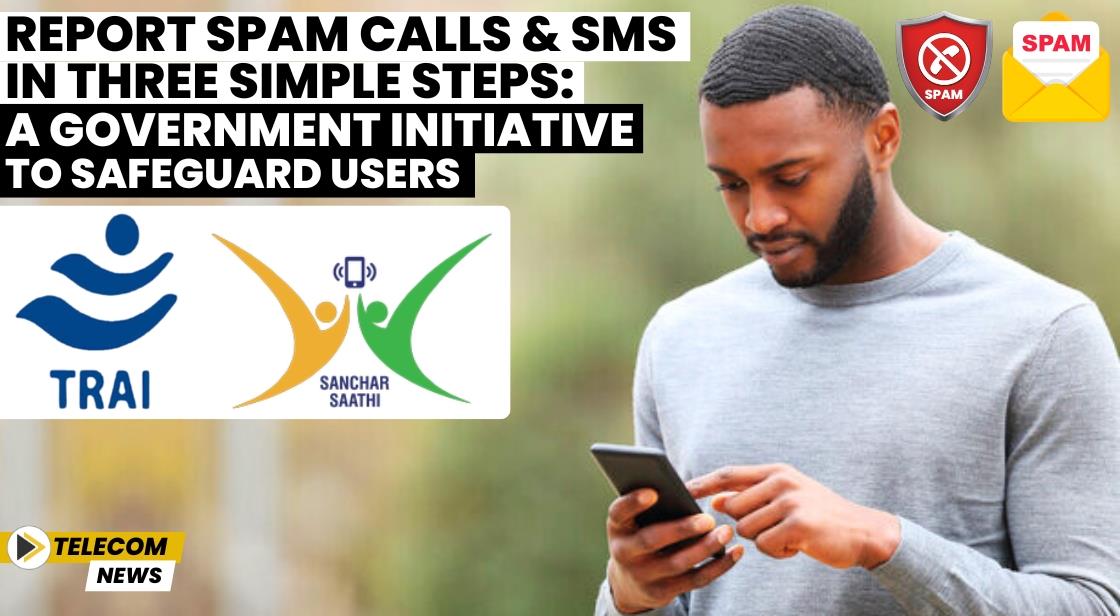Report Spam Calls and SMS in Three Simple Steps: A Government Initiative to Safeguard Users

News Synopsis
In today's digital world, smartphones are used for numerous activities, from communication to banking and money transfers. However, with the convenience comes the risk of fraudulent activities, as scammers and hackers increasingly exploit users’ negligence through fake calls and SMS.
This rising threat of financial fraud has become a serious concern, prompting the Department of Telecommunications (DoT) to advise citizens to be vigilant when handling unknown calls and messages.
Recognizing the surge in such fraudulent activities, the Indian government has taken a series of decisive actions. One significant measure includes the introduction of the Chakshu portal, an online platform where users can report fake calls and SMS in a few easy steps. This initiative aims to curb financial fraud and spam-related issues by encouraging users to take proactive steps in reporting suspicious numbers and messages.
In collaboration with the Telecom Regulatory Authority of India (TRAI), DoT has issued stringent guidelines for telecom operators, demanding stricter monitoring and actions against fake calls and messages. These measures are designed to protect users from scams that can lead to identity theft, financial losses, and unauthorized access to sensitive information.
How to Report Spam Calls and SMS Using the Chakshu Portal
If you receive suspicious calls or SMS, reporting them is now easier than ever. The Department of Telecommunications (DoT) has laid out a simple three-step process that users can follow through the Sanchar Saathi portal. Here's how:
-
Access the Sanchar Saathi Portal: Visit the official website https://sancharsaathi.gov.in.
-
Navigate to Chakshu: Click on the 'Citizen Centric Services' section and then select 'Chakshu.'
-
Submit the Details: Fill out the provided form with accurate details about the spam or fraudulent call or message.
By providing accurate information, users enable DoT and TRAI to investigate the reported numbers thoroughly. Once validated, the authorities take appropriate action, including blocking the reported numbers to prevent any further spam or fraud attempts from those sources.
The Chakshu portal has proven to be an effective tool in the fight against telecom fraud. According to official reports, DoT has blocked over 100 million SIM cards as a result of reports submitted through this platform, drastically reducing the number of fraudulent calls and messages that users receive.
Safety Tips: Beware of Fake Chargers
While staying vigilant about fake calls and SMS, users should also be cautious about using counterfeit chargers, which can pose serious safety risks. Using uncertified chargers, especially those from local markets or from different brands, can lead to severe issues like battery explosions or fires. In some cases, counterfeit chargers are sold as replicas of the original, increasing the potential danger.
To ensure your charger or any other electronic device is authentic, the Government of India has introduced the BIS Care official app, where users can verify the authenticity of their gadgets. It’s a vital tool to avoid the hazards associated with counterfeit electronics.
Conclusion:
In an era where smartphone users are increasingly vulnerable to scams and fraudulent activities through fake calls and messages, the Indian government has introduced a straightforward yet impactful solution. The Chakshu portal, along with the support of TRAI and telecom operators, empowers citizens to report suspicious numbers and SMS, thereby taking proactive steps to protect their personal and financial information.
By following the three easy steps outlined by DoT, users can not only safeguard themselves but also contribute to the broader fight against cybercrime. Furthermore, staying cautious about counterfeit electronics, such as chargers, ensures the safety of their devices and homes. These initiatives reflect the government’s commitment to creating a more secure digital environment for everyone.
You May Like









